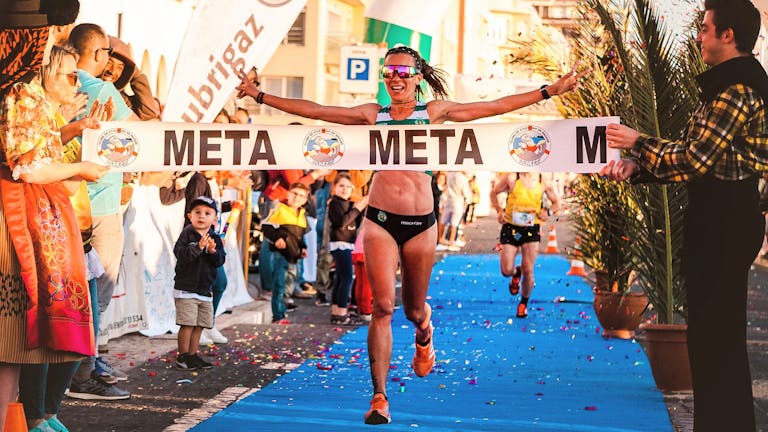But are all miles created equal? Summer training is best used to build an aerobic base so you can nail your fall speed work and races.
With temperatures reaching over 80°F (~27°C) as early as 6am, my motivation to run has plummeted. It’s hard to get the coveted runner’s high when you’re focused on the sweat dripping down your face and the humidity sticking to your skin.
This came as a disappointment because I had intended to use this summer to build my short distance speed, but instead, I can’t seem to hold paces I had been running with ease throughout the spring. I realized something about my training approach needed to change when my “easy” run heart rate was 180bpm.
The most obvious reason for these changes is the summer heat. Although heat acclimatization is marketed to negate these effects, I’m beginning to think that it doesn’t account for the east coast humidity.
The notion of painful summer running is nothing new – the phrase “summer miles bring fall smiles” might just be engraved in the cross-country coach vernacular. It suggests that the summer months are a perfect time to grow as a runner, so why don’t I feel like I’m making any progress?
My setbacks may be explained by my misguided idea of summer training. Higher temperatures are going to force your body to work harder, and it is crucial to work alongside that fact. I had been prioritizing hard workouts and up-tempo easy runs, made harder by the heat, and burned myself out in the process. This is not the type of growth that experienced runners refer to when they suggest using the summer to get ahead for the fall season.
Heat-Related Illness
The lifestyle changes associated with summer as a full-time student had been adding to my stress levels and denying my ability to recover. The biggest factor among these changes being a lack of air conditioning which can affect sleep and promote heat exhaustion. Not only was I feeling sick during my runs, but I could hardly keep my head up when I returned from them.
Heat-related illness may affect people differently based on genetic and environmental factors, but it’s important to listen to your body and understand exercise induced stress. It’s easy to get caught up in a comparison to other summer runners, but the best fall performance will be overshadowed by injury or burnout in the months prior.
Aerobic Base Training
So, what should summer training look like? It seems that the best results come from a focus on building your aerobic base. This (likely overused) term refers to your body’s ability to perform moderately difficult efforts (about the upper limit of zone 2) for a long period of time. For me, this effort tends to happen when I just go out and run a steady pace with no intention of either speed or recovery, and it also happens to be the type of run I enjoy most. It’s sort of like when you began running and didn’t know what a “tempo” run or “threshold” workout meant.
Aerobic base training uses oxygen to make energy through cellular respiration. At this exercise intensity, blood lactate levels will rise, and our aerobic base will work to clear the lactate out. Blood lactate is known to cause muscle fatigue and performance decrements, so the faster we can lower these levels, the better we can run.
According to a study on performance predictions by running volumes, Arturo Casado, PhD, a researcher at Isabel I University, said, “Easy running was crucial in better performances, partly because of its contribution to total distance run.” The total volume that world-class long-distance runners ran was a strong indicator of their performance. Tempo runs and short-interval training became more effective after a strong aerobic base (built over years) was achieved.
Most runners are not world-class, so it is safe to generalize that prioritizing easy runs in their current training is fundamental to improving performance. While speed work is important, it isn’t going to be as effective if your aerobic base is lacking.
This means that a summer season of steady-state runs will lead to greater aerobic capacity for those fall speed sessions to drive home your training. While it may be difficult to accept slower paces or remove a few workouts to improve recovery, it is crucial to developing as a runner.
The fall smiles will come because you stayed consistent and persevered through a summer plateau, not because you nailed a tempo run and needed three days of rest to feel better again.
Sources
Bettin, A. (2024, July 3). The science behind building an aerobic base. TrainingPeaks. https://www.trainingpeaks.com/blog/science-of-aerobic-base-training/#:~:text=What%20is%20Aerobic%20Base%20Training,2)%2C%20and%20hold%20it.
Casado, Arturo1; Hanley, Brian2; Santos-Concejero, Jordan3; Ruiz-Pérez, Luis M.4. World-Class Long-Distance Running Performances Are Best Predicted by Volume of Easy Runs and Deliberate Practice of Short-Interval and Tempo Runs. Journal of Strength and Conditioning Research 35(9):p 2525-2531, September 2021. | DOI: 10.1519/JSC.0000000000003176


